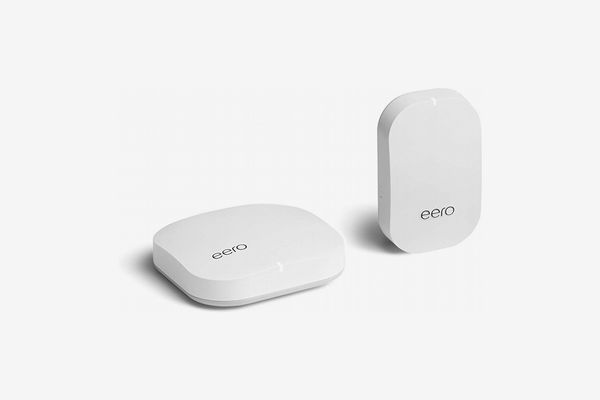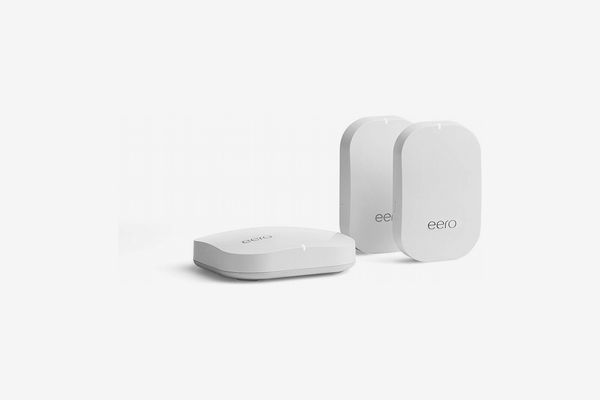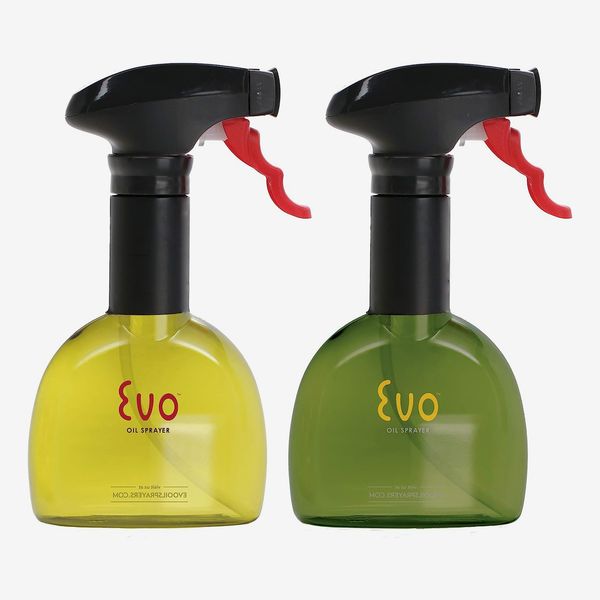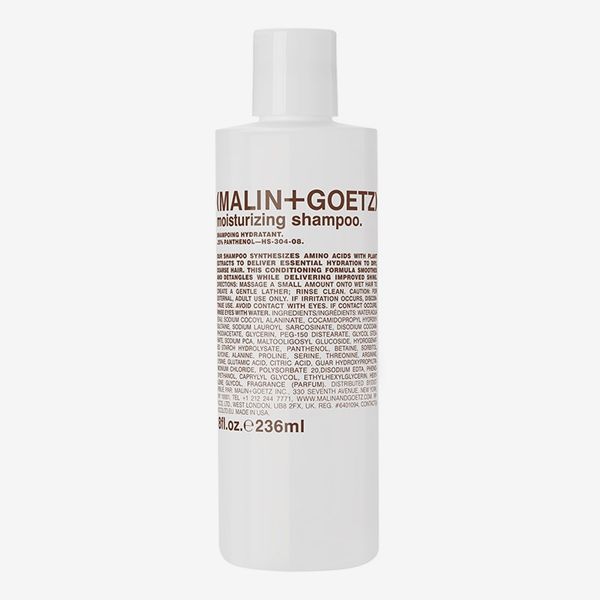
A former tech columnist at Yahoo, Scientific American, and the New York Times, David Pogue will write occasionally for the Strategist about things he has bought for himself and loves.
Whenever someone complains to me about Wi-Fi dead spots, I roll my eyes (mentally, of course). Life has plenty of challenges, but that is a solved problem. I’m not talking about “range extenders,” which purport to grab the dying end of your Wi-Fi’s signal and fling it forward; I’m talking about mesh networks. Instead of buying a single Wi-Fi router (the standard thing that comes when you sign up for your Spectrums or your Comcasts), you buy two or three small ones and space them evenly throughout your house. They create a single blanket of strong Wi-Fi coverage everywhere you go. I’ve tested just about every system out there: Eero, Plume, Luma, Google, Netgear, Linksys, and AmpliFi HD. For Casa de la Pogue, I wound up buying the Eero system.
What my wife and I love most about Eero is the design. Most mesh-network transmitters are designed to be small and great-looking, because you’re supposed to park them in public view (walls and closet doors frustrate them). The Eero’s base station is a sleek 5.8-inch square, rounded at the corners and top; if it were 1/50th its size, it’d look like some kind of headache pill. It communicates with Eero beacons, which are half the size and 25 percent less expensive. They plug directly into any outlet, so there’s no cruddy-looking cables, and there’s an automatic night light on the bottom, which is sometimes even more useful than the Wi-Fi. I’m morally obligated to mention that the Eero’s rival, Google Wi-Fi, works fine and costs a ton less: three base stations for $260.
But we went with the Eero for a few reasons — first, because the beacons are smaller, sleeker, and less technoid-looking than the other companies’ base stations (and it has a night light, which is super cool). Second, the app is fantastic — with a tap, we can shut off the kids’ Wi-Fi access at mealtime and sleepytime.
The third reason is that Eero has been much more active than any other brands at adding new software features over time; there’s an update roughly monthly. It added Alexa voice commands sometime ago, and also created an optional fee-based service that blocks ads and malware from your whole network. All of that goodness jacks up the Eero’s price. But as with mattresses and ice cream, it’s worth going premium for Wi-Fi.
One base station and one beacon is enough to cover a two-bedroom home.
If your place is a bit bigger, you should spring for the bundle that includes a second beacon, for homes up to 3,500 square feet.
The Strategist is designed to surface the most useful, expert recommendations for things to buy across the vast e-commerce landscape. Some of our latest conquests include the best acne treatments, rolling luggage, pillows for side sleepers, natural anxiety remedies, and bath towels. We update links when possible, but note that deals can expire and all prices are subject to change.
Every editorial product is independently selected. If you buy something through our links, New York may earn an affiliate commission.






